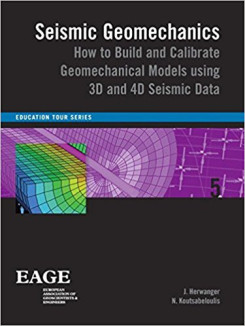Seismic geomechanics
Three-dimensional geomechanical models are becoming frequently used to assess the state of stress inside the Earth. Knowledge of the stress-state in a reservoir and the surrounding rock allows assessing the risk of reservoir compaction, wellbore failure, sanding, breach of seal integrity, fault re-activation amongst other issues and allows the design of mitigation for these issues. Three-dimensional seismic data and inversion models can be used in building geomechanical models and time-lapse (4D) seismic data provide a means of calibrating the dynamic behavior of reservoir geomechanical models. The purpose of this course is to provide an overview of currently available workflows to build and run calibrated reservoir geomechanical models maximizing the use of 3D and 4D seismic data. Rock-physics, relating the state of stress in the Earth and the propagation velocity of seismic waves, forms the link between seismic observations and the geomechanical model, and this link will be discussed both from experimental data and from a theoretical viewpoint. Attendees will learn how a combination of 3D geomechanical models, coupled to flow models, built and calibrated with 3D and 4D seismic data help in creating a deep understanding of the reservoir depletion processes and the state of stress in the reservoir and surrounding rock.
- Genre: All Books, Geomechanics, Geophysics
Cast & Characters
| 11-16 | Introduction |
| 17-38 | Building a Reservoir Geomechanical Model |
| 39-58 | Analysis of Production-Induced Deformation and Stress Changes |
| 59-92 | Rock Physics for Geomechanics |
| 93-114 | Geomechanical Effects in Time-Lapse Seismic Data |
| 115-134 | Case Study: 3D Exploration Geomechanical Model |
| 135-154 | Case Study: Joint Interpretation of 4D MEM with Time-Lapse Seismic Data |
| 155-174 | References |
| 175-181 | Appendix A: Seismic Velocity in Anisotropic Media |

